 |
|

 September 2, 2009Harvard's SDM Hand – Worldwide Exclusive License Barrett expects the first production units to be available by 2011. About Harvard University's Office of Technology Development About Barrett Technology, Inc. August 20, 2009Time Magazine Rates WAM Arms as #1 Robot in JapanBarrett makes Time Magazine's Top-10 List of robots in Japan, taking top spot.
|
Mouseover for video controls
|
German Chancellor Angela Merkel and Intel CEO Craig Barrett look on as the WAM physically interacts with Arnold Schwarzenegger to open CeBIT'09. Barrett Technology customer Intel used its advanced electric-field proximity sensor on the BarrettHand to guide the arm-hand behavior during the ceremony. Their sophisticated system also has a camera in the palm. CeBIT is the largest information and telecommunications technology show in the world, and the Barrett Technology's WAM arm and BarrettHand represent the spirit of that show.
Photo Courtesy of Brad Hood, Intel Research Seattle
Video Courtesy of CeBIT'09
February 23, 2009
Barrett More Than Doubles its Shipments of WAMs in 2008 and
Cuts Warranty Costs
 Barrett
posts a record year in 2008, more than doubling the pace of new WAM
installations. According to CEO Townsend, "our customers have been
pleased with the new WAM-arm systems. In 2008 we noticed more customers
purchasing full systems [with BarrettHand or Gimbals] and pairs of
systems for a range of applications from product development to neural
research." Based on the durability of these systems in the field,
Barrett also cut the price of its extended-service contracts by half in
2008.
Barrett
posts a record year in 2008, more than doubling the pace of new WAM
installations. According to CEO Townsend, "our customers have been
pleased with the new WAM-arm systems. In 2008 we noticed more customers
purchasing full systems [with BarrettHand or Gimbals] and pairs of
systems for a range of applications from product development to neural
research." Based on the durability of these systems in the field,
Barrett also cut the price of its extended-service contracts by half in
2008.
November 13 , 2008
WAM Increases Barrett’s Global Footprint
 Spurred
by the broad popularity of the WAM robotic arm, Barrett has now
installed its equipment in 20 countries around the globe with new
installations in China, Korea, and South Africa. Production at Barrett
has been further streamlined in response to this rising demand.
According to Barrett CEO, Townsend, “We are pleased that customers have
begun to really take advantage of the capabilities that are unique to
the WAM. And, we are dedicated to continue building our reputation for
responsive application support and service during this period of
expansion.”
Spurred
by the broad popularity of the WAM robotic arm, Barrett has now
installed its equipment in 20 countries around the globe with new
installations in China, Korea, and South Africa. Production at Barrett
has been further streamlined in response to this rising demand.
According to Barrett CEO, Townsend, “We are pleased that customers have
begun to really take advantage of the capabilities that are unique to
the WAM. And, we are dedicated to continue building our reputation for
responsive application support and service during this period of
expansion.”
March 1 , 2008
Barrett Reaches Record Sales Propelled by WAM Arms
and Puck Technology
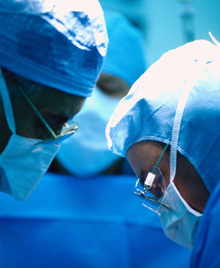 Powered
by its revolutionary "Puck" servodrive technology, Barrett breaks its
all-time sales record on strong WAM-arm shipments in 2007. "We
have been pleased with our steady growth and profitability since
introducing the Puck in our WAM systems about 4 years ago." according
to Barrett CEO and founder, Bill Townsend. "The first customers were
top research institutions around the globe purchasing the systems to
explore new levels of performance and human interactivity. Now we are
getting traction in emerging applications among manufacturers where
conventional-robot versatility falls short. We're also participating in
medical surgery [via partner Nasdaq:MAKO] with several hundred
successful partial-knee-implant surgeries, where the doctor and the
robot share the cutting tool. Patients benefit from the best of
seasoned human intuition and machine precision."
Powered
by its revolutionary "Puck" servodrive technology, Barrett breaks its
all-time sales record on strong WAM-arm shipments in 2007. "We
have been pleased with our steady growth and profitability since
introducing the Puck in our WAM systems about 4 years ago." according
to Barrett CEO and founder, Bill Townsend. "The first customers were
top research institutions around the globe purchasing the systems to
explore new levels of performance and human interactivity. Now we are
getting traction in emerging applications among manufacturers where
conventional-robot versatility falls short. We're also participating in
medical surgery [via partner Nasdaq:MAKO] with several hundred
successful partial-knee-implant surgeries, where the doctor and the
robot share the cutting tool. Patients benefit from the best of
seasoned human intuition and machine precision."
February 1 , 2008
Engineering Opportunities at Barrett
 Barrett's
steady growth has created recent openings for key engineering positions
in power electronics and controls. Barrett is indebted to its customers
who we feel will be well served by the continued strengthening our
engineering team. For further information, click here.
Barrett's
steady growth has created recent openings for key engineering positions
in power electronics and controls. Barrett is indebted to its customers
who we feel will be well served by the continued strengthening our
engineering team. For further information, click here.
September 25, 2007
Yoky Matsuoka Wins $1/2-Million MacArthur Award
Barrett Alum, Yoky Matsuoka, Recognized for Leadership in Advanced Robotics
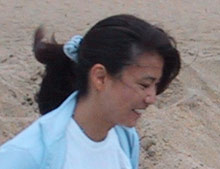 US National television news covered the founder of the field of
neurorobotics, Prof. Yoky Matsuoka, last night as she received the prestigious John D. and Catherine T. MacArthur Foundation Genius Award. Yoky Matsuoka
joined Barrett to lead the engineering team during the company's
formative years in the 1990s, contributing to some of its most
important technical achievements. Barrett's year-over-year growth today
is due in large part to the enormous energy Yoky put into Barrett and its products. Yoky
has continued to be a close friend ever since. Her persistent vision
and encouragement have guided Barrett to its leadership role in
advanced human-interactive robotics. According to Barrett founder, Bill
Townsend: "the MacArthur Foundation could not have chosen a more
deserving award recipient. In addition to the intelligence, drive, and
creativity presumed of a MacArthur Fellow, Yoky is also a terrific mother, professor, advisor, role model, loyal friend, and
person of deep professional integrity. Congratulations, Yoky!"
US National television news covered the founder of the field of
neurorobotics, Prof. Yoky Matsuoka, last night as she received the prestigious John D. and Catherine T. MacArthur Foundation Genius Award. Yoky Matsuoka
joined Barrett to lead the engineering team during the company's
formative years in the 1990s, contributing to some of its most
important technical achievements. Barrett's year-over-year growth today
is due in large part to the enormous energy Yoky put into Barrett and its products. Yoky
has continued to be a close friend ever since. Her persistent vision
and encouragement have guided Barrett to its leadership role in
advanced human-interactive robotics. According to Barrett founder, Bill
Townsend: "the MacArthur Foundation could not have chosen a more
deserving award recipient. In addition to the intelligence, drive, and
creativity presumed of a MacArthur Fellow, Yoky is also a terrific mother, professor, advisor, role model, loyal friend, and
person of deep professional integrity. Congratulations, Yoky!"
June 11, 2007
Barrett Wins Competitive NSF Grant
Highest Performance ServoElectronics Module is also World's Tiniest
and Most Efficient
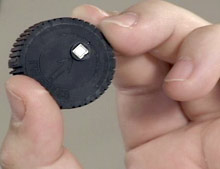 Barrett
has won a competitive grant from the National Science Foundation to
commercialize its Ultra-Miniature Puck Brushless ServoElectronics
Module. The "Puck" project has been multi-year project at Barrett to
develop the world's smallest and most power efficient high-performance
servomotor controller.
Barrett
has won a competitive grant from the National Science Foundation to
commercialize its Ultra-Miniature Puck Brushless ServoElectronics
Module. The "Puck" project has been multi-year project at Barrett to
develop the world's smallest and most power efficient high-performance
servomotor controller.
Barrett has been shipping Pucks™ in all of its robotic WAM™ arms for
2 years now with excellent results. The unique Puck-enabled features of
its robotic arm are: 1. Absence of any controller cabinet (internal or
external to the arm) improving reliability and portability. 2.
Incredibly low power consumption (an order of magnitude less than any
other arm in its class) for safety, portability, and the environment.
3. Ultra-high brushless-servo performance enabling application such as
force-field enabled medical surgery.
With the huge success of its own use of the Puck in its WAM arm,
Barrett is openly soliciting feedback from potential end users who seek
ultra-power-efficiency and tiny size. Nearly all industrial precision
machines rely on brushless servomotors that must be housed in a large
separate "controller cabinet." While the Puck is not available outside
Barrett's WAM™ arm today, NSF funding over the next 3 years will enable
Barrett to develop features to make this module universally adaptable
to a wide range of brushless-servomotor applications.
The hermetically sealed Puck is based on an innovation that makes a
servo amplifier so power efficient that the size can be collapsed
dramatically. The present PUCk (powerful universal controller) is black
and shaped like a hockey puck, but is only 1/10th the volume. The new
Puck will be even smaller and handle from 1 horsepower (700 watts) of
motor power at the high end down to the tiniest brushless motors made.
The Puck innovation also integrates precise rotor-position sensing and
has its own 32-bit CPU, eliminating most of the wiring normally
associated with brushless applications.
March 16, 2007
History Channel Unveils WAM Arm's Core Technology
History Channel's Modern Marvels
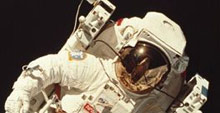 Barrett
Technology, Inc.'s robotic WAM™ arm and the striking technology that
drives it will be examined on the History Channel's Modern Marvels
series on the evening of Wednesday, May 16, 2007. The show, called "It
Came from Outer Space," explores key technologies funded by the US National Aeronautics and Space Administration.
Barrett
Technology, Inc.'s robotic WAM™ arm and the striking technology that
drives it will be examined on the History Channel's Modern Marvels
series on the evening of Wednesday, May 16, 2007. The show, called "It
Came from Outer Space," explores key technologies funded by the US National Aeronautics and Space Administration.
A portion of the show highlights Barrett's struggle to design the
robotic arm that achieved the title of "most advanced robotic arm" in
the special Millennium Edition of the Guinness Book of World Records.
The program also unveils the most striking breakthrough in Barrett's
history: "Puck™" motor technology, funded since 2000 under additional
competitive awards from the US National Science Foundation and the US Department of Energy.
The History Channel is rated 3rd
among 147 media brands, is a leading cable television network featuring
compelling original, non-fiction specials and series that bring history
to life in a powerful and entertaining manner. The Guinness Book of World Records is one of the most popular annual publications of all time.
January 25, 2007
WAM™ Code Gets Even Better
Prof. Rui Cortesão Integrates Task-Based Dynamic Model
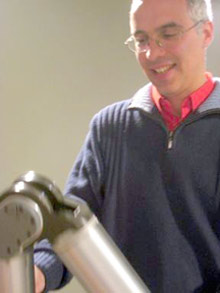 Robot
touch-control designer, Rui Cortesão, visits Barrett Technology from
Portugal for three months this winter raising the touch performance of
the WAM™ to a new level. Unique in robotics, the Whole-Arm Manipulator
(WAM™) enables intrinsic touch sensitivity over the whole arm-- just
like people. Harnessing this capability for real tasks though requires
an enhanced control system, and that is where Cortesão's contributions
fit in.
Robot
touch-control designer, Rui Cortesão, visits Barrett Technology from
Portugal for three months this winter raising the touch performance of
the WAM™ to a new level. Unique in robotics, the Whole-Arm Manipulator
(WAM™) enables intrinsic touch sensitivity over the whole arm-- just
like people. Harnessing this capability for real tasks though requires
an enhanced control system, and that is where Cortesão's contributions
fit in.
According to Cortesão : "Why did I come? I was compelled to come to
Barrett. The WAM™ is the ultimate machine for breaking new ground in
touch control. Other robot arms have far too much joint friction and
other issues for intrinsic touch control. Fortunately, the tendon
drives in the WAM's limbs are like mine: light and virtually
frictionless. After I purchased a WAM™ for my university last year, I
emailed Bill to propose my visit."
Townsend responds: "It seemed like an unusual request. Initially I
was concerned about the logistics, but Rui's proposal was convincing.
Now he seems like part of the family. It's been an exciting two months
so far with simultaneous progress on WAMs™ here and in Europe. We are
seeing and feeling dramatic results."
Rui Cortesão leads his research group at the University of Coimbra. He finished his Masters and PhD degrees in robotics under Prof. Gerd Hirzinger (head of the Robotics Institute at Germany's Space Agency, DLR) and completed his post-doctoral work in robotics under Prof. Oussama Khatib (Professor of Computer Science) at Stanford University. He regularly publishes papers in top robotics conferences and journals.
 |
|





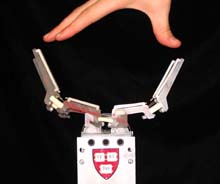 Barrett Technology, Inc. announced today the conclusion of a license
Barrett Technology, Inc. announced today the conclusion of a license 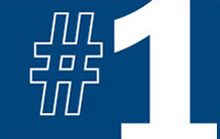 Daisuke, please make room for your new team mates. A pair of Barrett
WAMs are shown at play. One pitches a fast ball. The second WAM swings
and bats the ball out of the park (lab area). According to Barrett CEO,
Bill Townsend: "Japan is the quintessential home of the robot and the
place to watch for emerging robot technology. There are more robot
manufacturers in Japan than any other country on the planet, so it is
particularly extraordinary that a pair of Barrett's WAMs made the
Top-10 List, let alone the top spot. Of course, we owe most of
this success to the genius of Professors Ishikawa-sensei and
Namiki-sensei of the University of Tokyo. They have shown what can be
done with the combination of WAM/Puck technology and ultra-high-speed
machine vision."
Daisuke, please make room for your new team mates. A pair of Barrett
WAMs are shown at play. One pitches a fast ball. The second WAM swings
and bats the ball out of the park (lab area). According to Barrett CEO,
Bill Townsend: "Japan is the quintessential home of the robot and the
place to watch for emerging robot technology. There are more robot
manufacturers in Japan than any other country on the planet, so it is
particularly extraordinary that a pair of Barrett's WAMs made the
Top-10 List, let alone the top spot. Of course, we owe most of
this success to the genius of Professors Ishikawa-sensei and
Namiki-sensei of the University of Tokyo. They have shown what can be
done with the combination of WAM/Puck technology and ultra-high-speed
machine vision."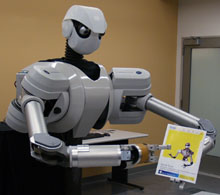 We are proud that Barrett is recognized by
We are proud that Barrett is recognized by 

